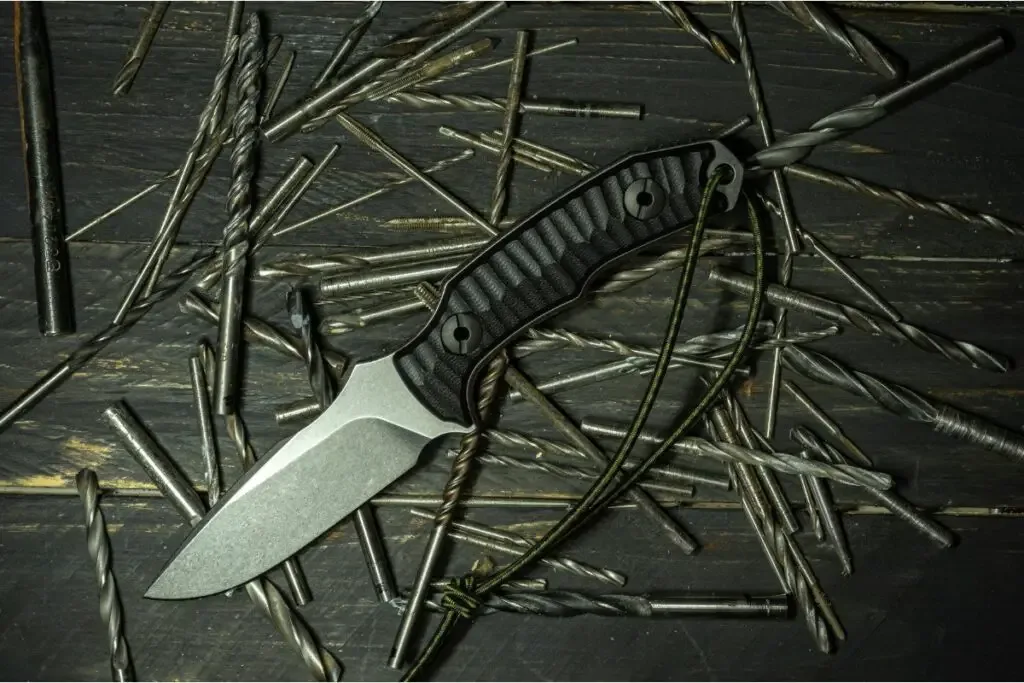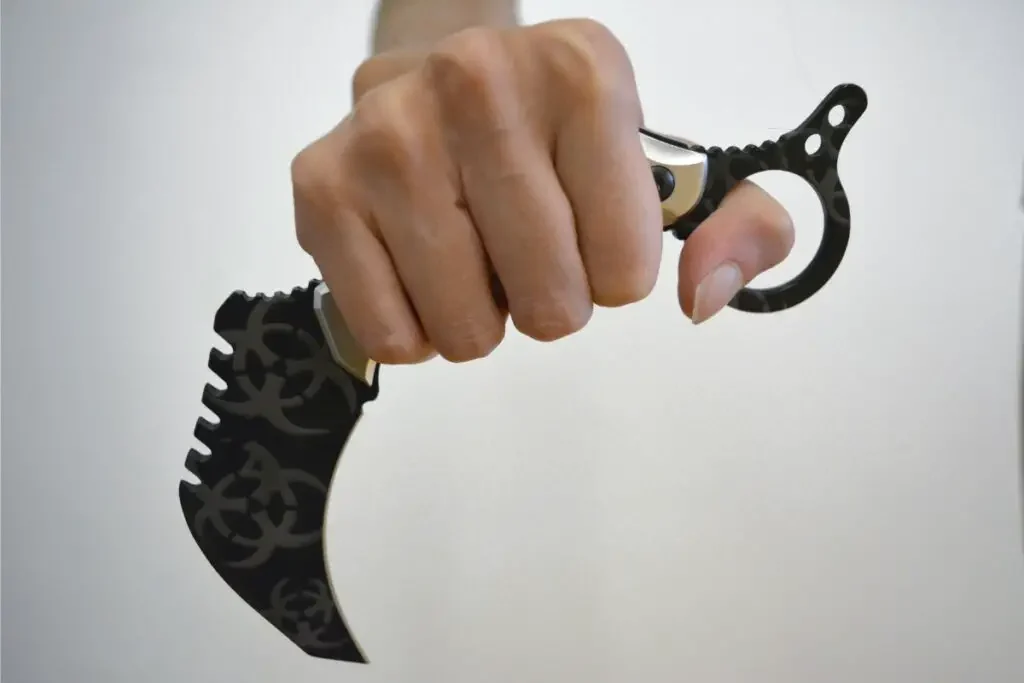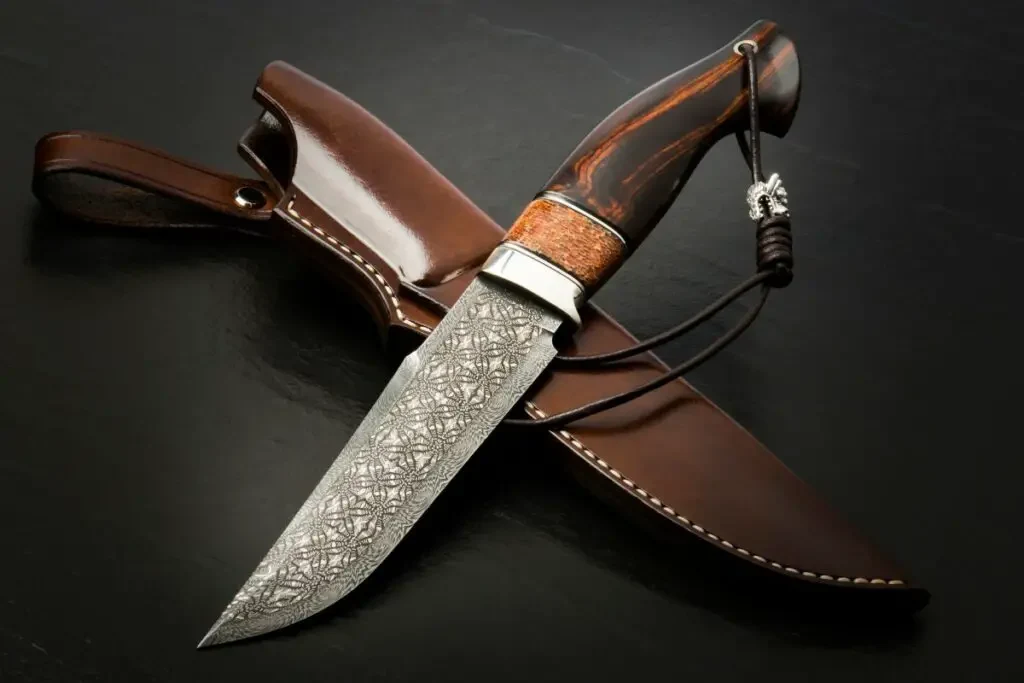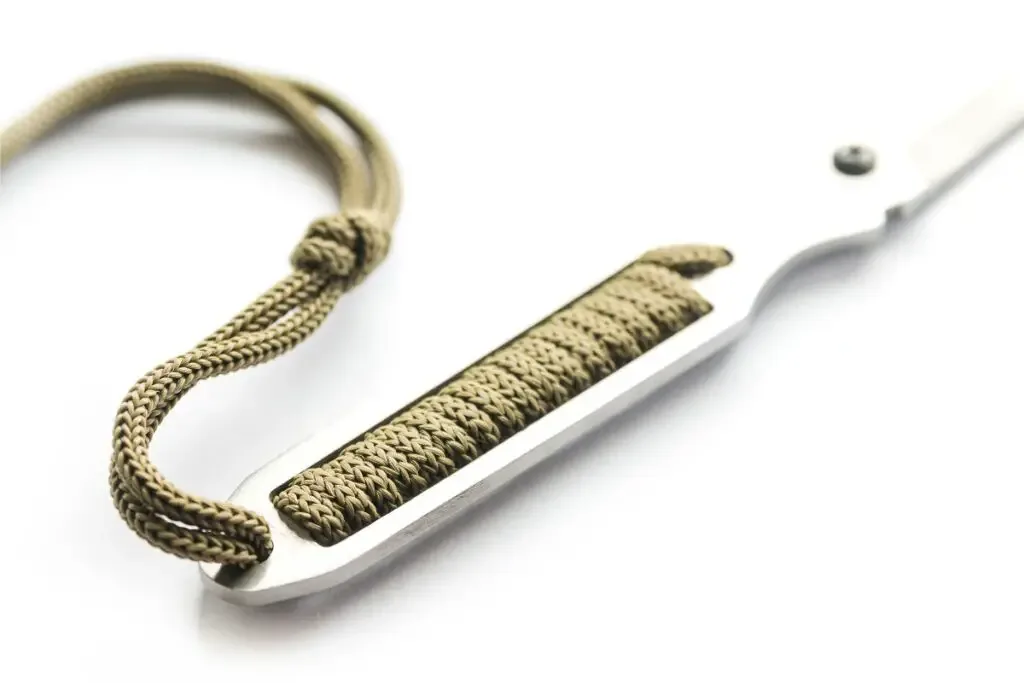As an Amazon Associate, we earn from qualifying purchases with no additional costs for you.
Have you ever looked at your own knife and wondered why there are holes in the handle? Knife handles may feature holes for a variety of reasons. In many cases, there is no single answer about why some knives have holes in their handle because it can depend on the type of knife and its intended purpose.
Some knives have holes in the handle for several reasons. Some are strategically placed to allow the user to hang the knife from a hook or rod, some are for the fitment of a lanyard, while others are used as ventilation channels, and still, others are designed for decorative purposes.
Believe it or not, those holes can serve many different purposes, from safety purposes to decorative purposes. The purpose of holes in the handle would generally depend on the type of knife, how the knife is intended to be used, and the circumstances in which the knife will be used or stored.
If you are interested in checking out the best honing steels for Japanese knives we recommend you can find them by clicking here (Amazon link).

Why Do Some Knife Handles Have Holes?
The reasons that some manufacturers and knife makers put holes in the handles of the knives that they produce can have numerous reasons.
Some of these reasons have practical applications behind their inclusion in the design of the knife, while others are purely for decorative purposes to enhance the visual appeal of the knife.
Not all knives have holes in the handles, which is an indication that handle holes are not a necessity or a requirement for all knives. But in the use of some knives, holes in the handle can be a safety feature.
The type of knife and the intended purpose of its use will often determine the purpose of the holes and the location of the holes in the handle.
We are going to take a look at some of the reasoning and logic that is behind the inclusion of these holes in the handles of some knives.
This will give you the knowledge to ascertain if holes in the handle of a knife are a feature that would appeal to you or satisfy a need in the way that you use your knives.
TIP: Many knives designed for hiking and the outdoors have functional holes in the handle. A knife is an essential part of any hiker’s gear. Found out the reasons why in the post below:
7 Important Reasons Why You Always Need a Knife When Hiking
Weight Reduction
One reason that a knife may have holes in the handle has to do with a weight reduction of the overall weight of the knife and for the purpose of balancing the knife correctly.
Since knives are generally made of steel, they can become quite weighty implements that could cause fatigue of the hand or reduce the dexterous manner in which the knife can be used.
This would prompt a knife maker to remove excess material from the knife in places where the material removal will not compromise the structural integrity of the knife.
The addition of the handle material to the handle of the knife also increases its weight, so weight reduction holes in the handle make sense.
Balance is another reason that the weight of the knife may need to be adjusted. If the handle is heavy, the balance of the knife needs to be further forward towards the blade.
In this instance, the knifemaker may strategically place holes in the handle to improve the balance of the knife.
TIP: Different types of knives have different weights, and very few people know how much a knife weighs. Check out the exact values for different knives in the article below:
Knife Weight: Exact Values For All Types in Grams & Pounds
Storing The Knife
In some instances, a hole in the handle of a knife could offer an alternative method of storing the knife. Special hooks can be installed on a wall which will allow the knives to be located on the hooks for storage.
This allows for the knives to be easily accessible and to make use of otherwise wasted wall space to store and display your knives.
Lanyard Hole

Another reason for a hole in the handle of a knife could be a lanyard hole. Knives that are used with a lot of downward force, such as a cleaver, have the potential to fly out of your hand during use.
A sharp cleaver flying out of your hand could cause serious injury to you or anyone else in the room.
A lanyard in such a knife will allow you to wrap the lanyard around your wrist, allowing you to get a better, tighter grip on the handle of the knife.
The lanyard will also prevent the cleaver from flying uncontrollably from your hand should your grip slip due to the force of the blow.
Cleavers are not the only knives that can benefit from a lanyard. Bushcraft knives that are used for heavy-duty work for batoning wood and other such survival chores are also made safer by the use of a lanyard around the wrist.
A lanyard also offers an alternative method to hang the knife in the kitchen or secure a knife to a backpack or belt. The lanyard can be used in conjunction with a carabiner clip that will offer a quick-release mechanism for the knife.
Ventilation And Grip Improvement

When you are cooking or using your knife in a situation where there is potential for your knife handle to become wet, it may compromise your grip on the handle of the knife.
Trying to cut a tough ingredient with a wet knife handle or wet hands could cause your hand to slip on the moisture and result in a cut.
Holes in the handle of the knife provide a ventilation point in the handle or a place for the water to go as you squeeze the handle of the knife in your hand.
Your hand will squeeze the moisture away from the surface between your hand and the handle material, and the holes offer a place for the water to escape.
Instances where this could be useful are when you are using a knife in the kitchen with hands that are constantly being washed or skinning animals out in the field after a hunt, where your knife handle could become slippery when coated in blood.
TIP: Forged and stamped knives are two of the most common ways that modern knives are made. But do you know the difference between them? If not, in the article below, you can find out!
Forged Vs. Stamped Knives: An Honest Comparison
Decoration

Sometimes, the holes in a handle are for nothing more than for visual appeal or brand recognition. Some knives have decorative holes located in their handles that are part of their brand, and all their knives will have these strategically located handle holes. This promotes brand recognition for the manufacturer.
In some cases, carefully located holes in the handle can complement the handle material and design and complement the overall design appeal of the knife.
Visual appeal is often the first aspect of a knife that attracts the interest of a potential buyer of the knife. If the viewer likes the overall look of the knife, then it is a major win for the manufacturer towards the sales of the knife.
Knifemaking has become very popular in recent years, and it has almost become an art form in its own right.
This means that more and more knife makers are focusing attention on the aesthetics of their knives rather than solely on their function and performance. Sometimes, this means putting holes in the handle of the knife to improve the look of the knife.
A Paracord Wrap

Some knives have holes in the handle to allow the user of the knife to add a paracord wrap to the handle. This is common in some types of survival or bushcraft knives where paracord is a key survival item.
Having a supply of paracord wrapped around the handle of your knife is a convenient method to carry some of this invaluable survival gear.
The holes will also allow the knife owner to change the paracord wrap to change the look and design of the handle and to add more paracord or reduce the amount if a more minimalistic look is desired for the knife.
This is one instance where the holes provide a useful function as well as a decorative function!
BTW: If you want to know more about Japanese and other knives and their sharpening, check out the books listed above. These books are recommended by professional sharpeners and knife makers (Amazon links):
- Japanese Kitchen Knives: Essential Techniques and Recipes
- The Knifenerd Guide to Japanese Knives
- Knife: The Culture, Craft, and Cult of the Cook’s Knife
- Sharp: The Definitive Introduction to Knives, Sharpening, and Cutting Techniques, with Recipes from Great Chefs
A Quick Summary
For quick reference and a summary of the top reasons knife handles can have holes, we have included a table as a concise overview.
| Reason | Description |
| Weight Reduction | Holes can reduce the knife’s overall weight and help balance it correctly. |
| Storing The Knife | Holes offer an alternative method for storing the knife, allowing it to hang on hooks or rods. |
| Lanyard Hole | Provides a safety feature, especially for knives used with force, by allowing a lanyard to be attached and wrapped around the wrist. |
| Ventilation & Grip | Holes can improve grip, especially when the handle becomes wet, by providing ventilation and a place for moisture to escape. |
| Decoration | Holes can be purely for visual appeal, brand recognition, or to complement the handle’s design. |
| Paracord Wrap | Holes allow users to add a paracord wrap to the handle, which can be useful in survival situations. |
Conclusion
There have been many different theories and reasons as to why some knives are designed with holes in the handle.
The most popular reasons behind these holes are that they are for weight reduction, easy storage of the knife, fitting a lanyard to the knife, improving the grip on the handle, or adding a paracord wrap.
One of the newest trends is decorative handles with various materials like wood or bone, and sometimes a few strategically placed holes add to the decorative features of these handle materials.
TIP: Using a lubricant with a whetstone is a topic that receives much debate in the knife industry. Every knife sharpener should know which lubricant to use on which whetstone. Follow the Do’s & Don’ts in the article below; you definitely won’t make a mistake!
Lubricating A Sharpening Stone: The 12 Do’s & Don’ts

